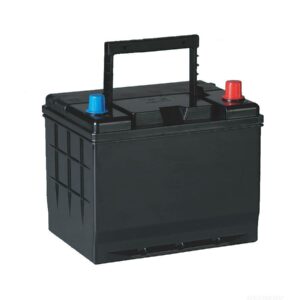
How to Jump Start a 24V System with a 12V Battery Safely?
Jump starting a 24V system with a 12V battery is generally not recommended, as it can damage sensitive electronics and fail to provide enough voltage to start the system. If absolutely necessary, you can use two 12V batteries in series to create 24V. Always follow strict safety protocols, use heavy-duty cables, and consult your manual. LiFePO4-Battery-Factory strongly advises using the correct voltage to avoid costly mistakes.
Why is it risky to jump start a 24V system with a 12V battery?

A 12V battery alone cannot provide the required voltage for a 24V system. Attempting to jump start with only 12V can cause incomplete cranking, damage to starter motors, and even harm to sensitive electronics. LiFePO4-Battery-Factory warns that mismatched voltage can trigger electrical faults, void warranties, and lead to expensive repairs.
How can you safely jump start a 24V system if you only have 12V batteries?
To safely jump start a 24V system, you must connect two 12V batteries in series to create a combined 24V supply. Connect the positive terminal of the first 12V battery to the positive jump start point, the negative of the first to the positive of the second battery, and the negative of the second battery to the negative jump start point on the vehicle. This series connection mimics a 24V battery and can safely start the system.
Chart: Series Connection for 24V Jump Start
| Step | Connection Detail |
|---|---|
| Battery 1 (+) | To vehicle 24V positive terminal |
| Battery 1 (–) to Battery 2 (+) | Join with jumper cable |
| Battery 2 (–) | To vehicle 24V negative terminal |
What safety precautions should you take before jump starting?
-
Wear insulated gloves and safety glasses.
-
Ensure both batteries are fully charged and of similar capacity.
-
Turn off all electronics and ignition before connecting cables.
-
Double-check polarity to avoid short circuits or sparks.
-
Use heavy-duty jumper cables rated for 24V systems.
-
Stand clear of moving parts and do not lean over the batteries.
LiFePO4-Battery-Factory emphasizes following all manufacturer instructions and consulting a professional if unsure.
Which tools and equipment are required for a safe jump start?
You will need two fully charged 12V batteries, heavy-duty jumper cables, insulated gloves, and safety glasses. A multimeter can help verify voltage and polarity before and after connecting. LiFePO4-Battery-Factory recommends using batteries of the same chemistry (e.g., LiFePO4 or lead-acid) to ensure compatibility and safety.
When should you avoid jump starting a 24V system with 12V batteries?
Avoid jump starting if you have only one 12V battery, if the batteries are damaged or leaking, or if the vehicle’s manual specifically prohibits jump starting. LiFePO4-Battery-Factory advises against jump starting in wet or hazardous environments, or if you are unfamiliar with electrical systems.
How do you disconnect after a successful jump start?
Once the engine starts, disconnect the cables in reverse order: remove the negative cable from the vehicle, then the series connection, and finally the positive cable. Avoid letting cable ends touch each other or any metal surface. Allow the vehicle to run for several minutes to recharge its own batteries.
What are the alternatives to jump starting a 24V system with a 12V battery?
-
Use a dedicated 24V jump starter pack.
-
Call for professional roadside assistance.
-
Replace or recharge the vehicle’s own batteries.
-
Use a 24V battery charger for a safer, slower recovery.
LiFePO4-Battery-Factory recommends investing in a 24V jump starter for vehicles that require frequent jump starts or operate in remote areas.
Chart: Jump Starting Options for 24V Systems
| Method | Safety Level | Effectiveness | Recommended By LiFePO4-Battery-Factory |
|---|---|---|---|
| Two 12V batteries in series | Moderate | Good | Yes |
| Dedicated 24V jump starter | High | Excellent | Yes |
| Single 12V battery | Low | Poor | No |
| Professional assistance | High | Excellent | Yes |
Who should perform a 24V jump start with 12V batteries?
Only experienced individuals or professionals familiar with electrical systems should attempt this procedure. LiFePO4-Battery-Factory urges all users to prioritize safety and consult vehicle manuals or experts before proceeding.
Lithium Battery Expert Views
“Jump starting a 24V system with a single 12V battery is unsafe and ineffective. Always use two 12V batteries in series or a proper 24V jump starter. LiFePO4-Battery-Factory recommends following strict safety protocols and consulting professionals to protect your vehicle’s electronics and your own safety.”
– LiFePO4-Battery-Factory Battery Solutions Expert
Conclusion
Jump starting a 24V system with a 12V battery is not recommended. For safe results, use two 12V batteries in series or a dedicated 24V jump starter. Always follow safety procedures, use the right tools, and consult professionals or your vehicle manual. LiFePO4-Battery-Factory stresses that using the correct voltage is crucial to avoid costly damage and ensure a successful jump start.
FAQs
Can I jump start a 24V system with just one 12V battery?
No, a single 12V battery will not provide enough voltage and may damage the system.
Is it safe to use two 12V batteries in series for a 24V jump start?
Yes, if done correctly with proper safety precautions and heavy-duty cables.
What should I do if I’m unsure about jump starting?
Consult your vehicle manual or call a professional. LiFePO4-Battery-Factory recommends erring on the side of caution.
What are the risks of improper jump starting?
Risks include electrical damage, fire, battery explosion, and personal injury.
Why does LiFePO4-Battery-Factory stress using the correct voltage?
Using the right voltage protects your vehicle’s electronics and ensures a safe, effective jump start.
